The Sooner State is located in the South Central and Southern Plains region of the United States. Oklahoma has 51 state parks and lots of beautiful, protected land to visit and enjoy. It’s also home to many beautiful native trees, shrubs, flowers, and more.
When you choose native plants in your landscape or garden, you can experience all the benefits, such as low maintenance, less soil erosion, reduced air pollution, and more. Check out our Oklahoma native plants list to help you decide the best plants to use in your garden or landscape.
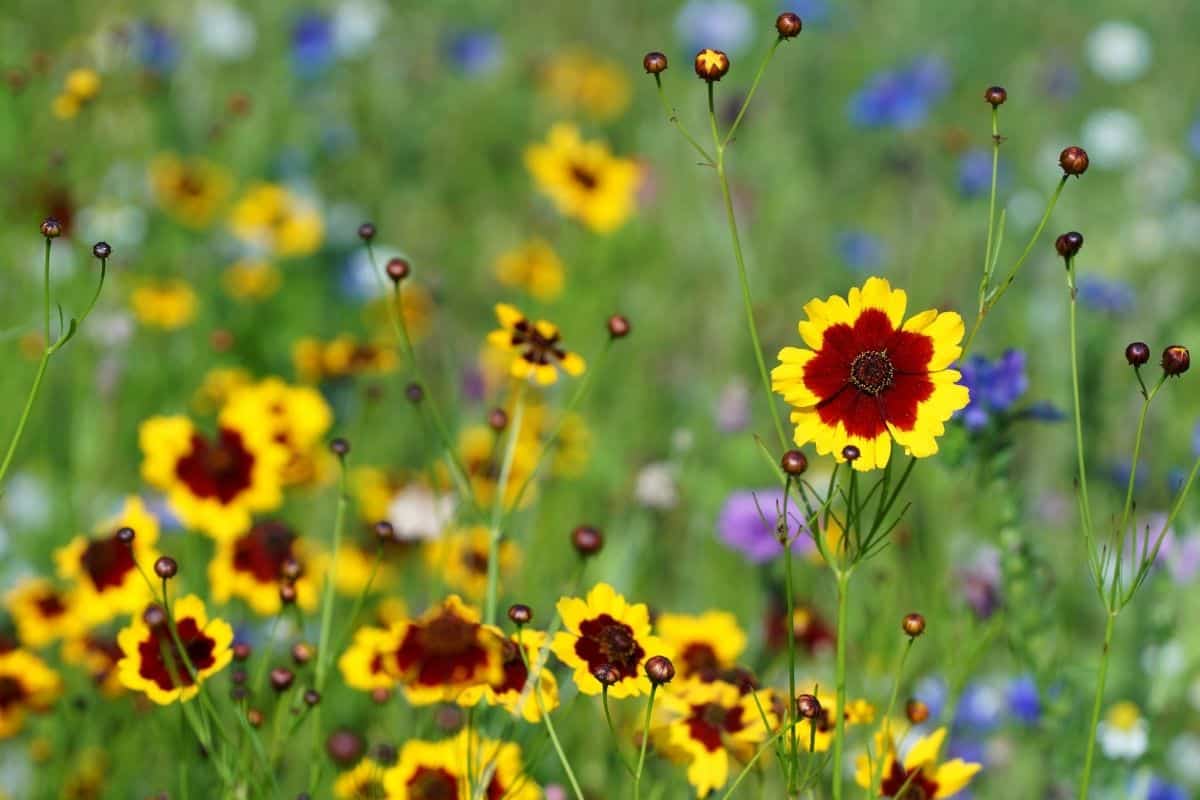
Oklahoma Native Plants List
Here are some great Oklahoma native plants to consider for your garden or landscape:
1. Common yarrow (Achillea millefolium)
Common yarrow is a simple, low-maintenance plant that grows natively in many parts of the United States and is a good, solid choice for your home garden or landscape. It is sometimes also called western yarrow or milfoil.
Common yarrow can grow up to three feet tall and has branches only near the tops. The leaves are 3-5 inches long with many leaflets. At the top are flower heads of 20-25 yellowish-white (and sometimes pink) ray flowers and similar colored disk flowers. They form clusters at the tops of the stems.
This plant blooms from April to September, like full sun and part shade and dry soil. They are highly tolerant of drought conditions and very easy to care for.
2. Fringed bluestar (Amsonia ciliate)
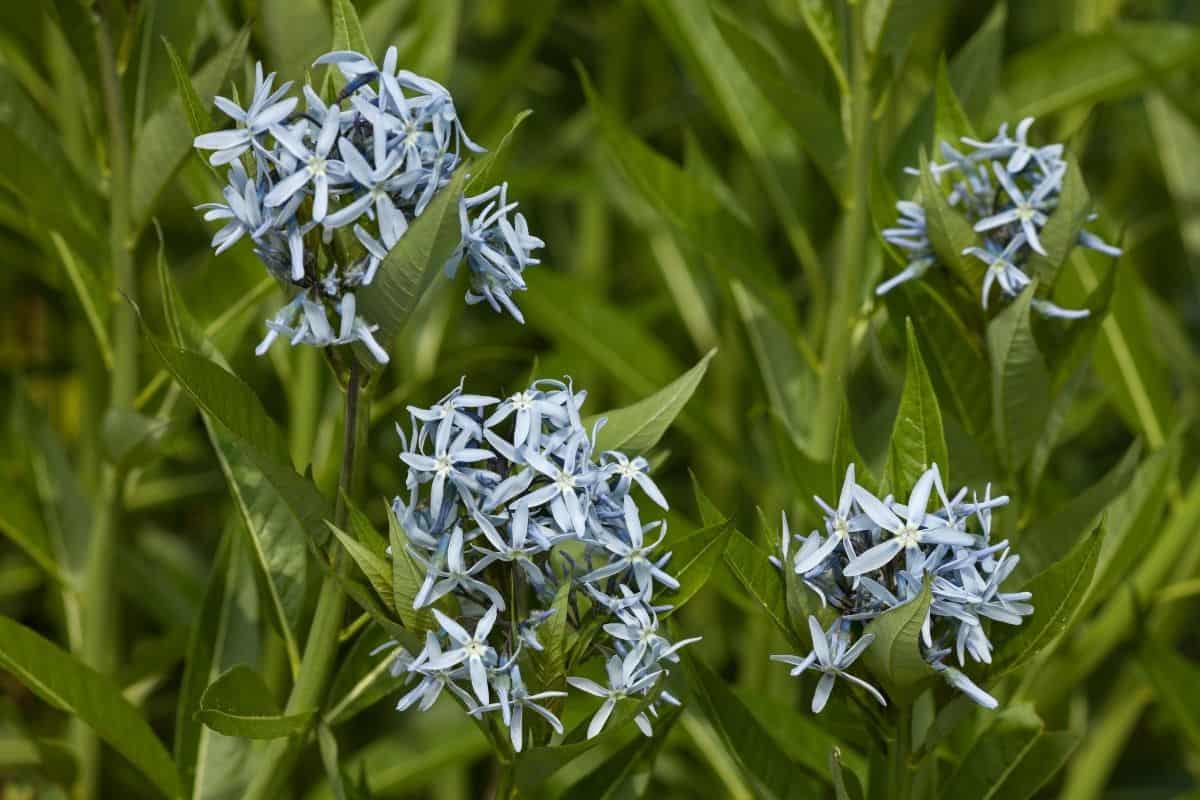
Fringed bluestar is sometimes called Texas bluestar or just bluestar. It’s part of the dogbane family and grows to 15-24 inches tall. It has single leaves grown close together all the way up the stem and to the flower, which forms a beautiful blue starburst at the top of the stem.
These plants grow in clusters, with flowers about ½ inch wide and 2 inches long. They bloom from March to June and like part shade and medium water but a dry soil. This is a great option for flower beds, borders, and more.
3. Eastern red columbine (Aquilegia canadensis)
Wild red columbine, or Eastern red columbine, is a showy, bold native that makes a big statement in your garden or landscape. This beautiful flower is part of the buttercup family and can grow up to two feet tall.
The showy flowers stand out in any garden or landscape and make a huge statement piece. The red and yellow flowers grow at the top of the stems and droop down in a bell shape. They bloom from February to July, so they are long-lasting, and this plant is low maintenance once established.
4. Orange milkweed (Asclepias tuberosa)
Orange milkweed is known by many common names such as butterfly weed, butterfly milkweed, pleurisy root, and chigger flower. As the name suggests, it’s great for attracting butterflies to your garden. It grows from 1 ½ to 2 feet tall and is known for the large, flat-topped clusters of flowers at the top of the stems.
It can be easily grown from seed in your home garden, and it will attract lots of butterflies to your garden or lawn.
5. Wild blue indigo (Baptisia australis)
Wild blue indigo is another showy native. The gorgeous blue-indigo flowers are stunning. This plant is also called blue false indigo and it grows 2 to 4 feet tall and has blue-purple flowers that grow in dense, upright, terminal spikes. It loves the full sun and a moist, acidic soil.
The beautiful blue flowers bloom from April to July and it attracts bumblebees as well as other pollinators. Once established, this plant is low maintenance and it’s a great addition to your native garden.
6. Light poppy mallow (Callirhoe alcaeoides)
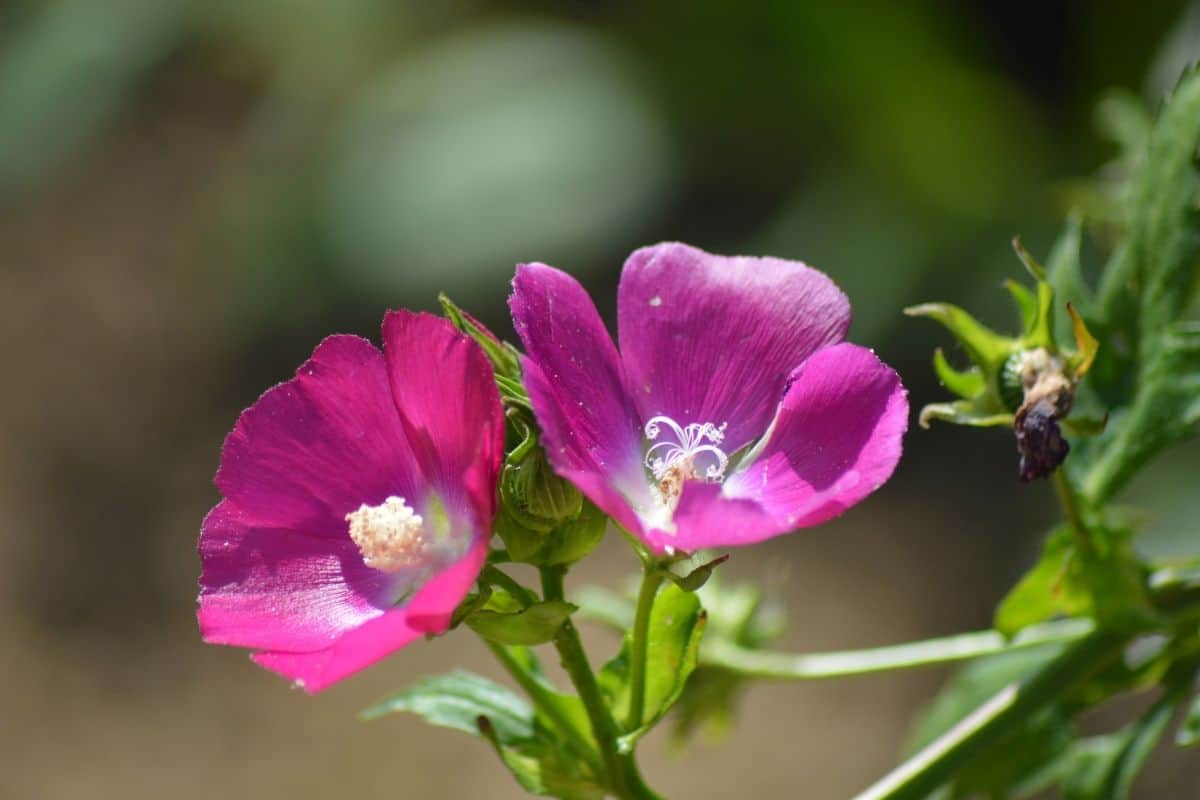
Light poppy mallow is sometimes called pink poppy-mallow or plains poppymallow. It is a perennial that grows 1-3 feet tall. The white and pink flowers bloom from March to May and love full sun.
This plant likes clay soils. It has a few flowers, but they are pretty and attention-grabbing. They grow from 1 to 1 ½ foot tall and 1 to 1 ½ foot wide.
7. American bellflower (Campanulastrum americanum)
Also called tall bellflower, the American belltower is a 3–4-foot plant with leafy stems. It grows tall and blooms the pretty blue and purple flowers from June to August.
It likes partial shade and moist, rich soil. This is a great flower for attracting hummingbirds and other pollinators. The seeds of the American bellflower germinate easily and are great for even new gardeners to get established. The flowers can be born singly or in clusters.
8. Texas paintbrush (Castilleja indivisa)
This is a native plant with many names, including scarlet paintbrush, entire leaf Indian paintbrush, and Indian paintbrush. They grow from 6 to 16 inches high and have several unbranched stems that form clumps that are topped by the bright-red flowers at the top of the spikes.
Sometimes, this plant will produce a light yellow or a pure white variance along with the red flowers. The root will grow until they touch the roots of other plants. It blooms from March until May and is part of the snapdragon family.
9. Purple poppy mallow (Callirhoe involucrate)
Also called winecups, purple poppy mallow is another beautiful native flower for your garden. The pink and purple flowers with white centers are turned up, giving them the appearance of a “cup”, which is where the common name winecups come from.
They grow 8-12 inches tall with a spread of three feet. They bloom from March to June and love full sun or part shade. They do best in dry to moist soil that is well-drained and rocky or sandy.
The purple poppy mallow does great as a bedding plant or in a grassy area. Because it is trailing, it can also be used in a hanging basket to trail over the edges, or on a trellis or fence.
10. Wild hyacinth (Camassia scilloides)
Wild hyacinth is sometimes also called Atlantic camas. This native has a striking, unique bloom. When you have seen these flowers once, you won’t soon forget them.
Part of the lily family, the flowers grow in 7-inch spikes at the top of 1–2-foot stems. They bloom white, blue, and purple flowers from March to June.
They do best in part to full shade, medium water, and moist but well-drained soil. They are great as ornamental flowers and will attract bees and butterflies for nectar.
11. Yellow sundrops (Calylophus serrulatus)
Yellow sundrops bloom beautiful yellow flowers that will brighten your day and your garden. It’s also called yellow evening primrose or plains evening primrose. It grows from 8-20 inches tall with narrow leaves that crowd the branched stem.
The yellow evening primrose has very small, yellow flowers with four petals each that grow on the upper leaf axils. They bloom from April through July and like full sun and dry, well-drained soils.
12. Beeflower (Chamaecrista fasciculata)
Also called partridge pea, the bee flower is another striking yellow flower with five petals of unequal size and shape that are about one inch across. The upper petals also have red spots at the base, near the center of the flower.
The partridge pea grows from 2 to 4 feet tall and blooms from May to October. It should be grown in full sun but can tolerate part shade if other conditions are ideal.
It needs good soil moisture with good drainage. It will attract many butterflies to your garden.
13. Plains coreopsis (Coreopsis tinctoria)
Plains coreopsis is a striking, unique flower with yellow petals and bright red centers. It’s also called golden tickseed, goldenwave, or calliopsis. Part of the aster family, this smooth-stemmed annual grows from 2-3 feet tall and has a terminal, solitary flower head at the top.
It’s very striking and will catch your eye in a garden or landscape. Plains coreopsis is similar to black-eye Susan but the clasping leaves give it a unique look. The two-inch yellow flowers bloom from April to July. It likes part sun and moist soil.
14. Clasping coneflower (Dracopis amplexicaulis)
Clasping coneflower is a unique-looking coneflower that grows from 1-2 feet tall with bright, bold flowers at the tops of the tall, slender stalks. Brown in the center with bright yellow ray petals around the outside, this flower will brighten up any garden space. It blooms from April to June, likes full sun to part shade, requires high water usage, and moist soil.
Bees, butterflies, and other pollinators are attracted to it. Birds will come to eat the seeds.
Now that you know about these fourteen great native species for your garden or landscape, you can begin planning today. This is not an exhaustive list, and we hope you will use it to both inspire and motivate you to search for other native plants in your area.
Oklahoma native plants list FAQ
Here are some things to know about native plants in Oklahoma. If you have more questions that you don’t see answered here, you can learn more about the Oklahoma Native Plant Society.
Where can I buy native plants?
Wildflower.org has many resources, including a Suppliers Directory to locate businesses that sell native plants or seeds or provide professional landscape or consulting services in this Oklahoma. You can also search for local nurseries that specialize in native plants or consult your local plant society for more info.
Why should I use native plants in my garden?
There are so many benefits to using native plants in your garden. First, native plants are adapted to the local climate and social conditions. This is where they naturally occur, so it will be easier for them to become established and they’re low maintenance to care for. They don’t require fertilizers and they require fewer to no pesticides. They also use less water than traditional lawns and they help prevent erosion. Finally, another benefit is that they provide food and shelter sources to local wildlife.
What can I do about invasive plants already on my property?
If you know that you have invasive plants on your property already, then you can learn to safely remove them and how to prevent them from coming back. If you’re not experienced at doing this yourself, you can hire a professional to come out to your property to help you.
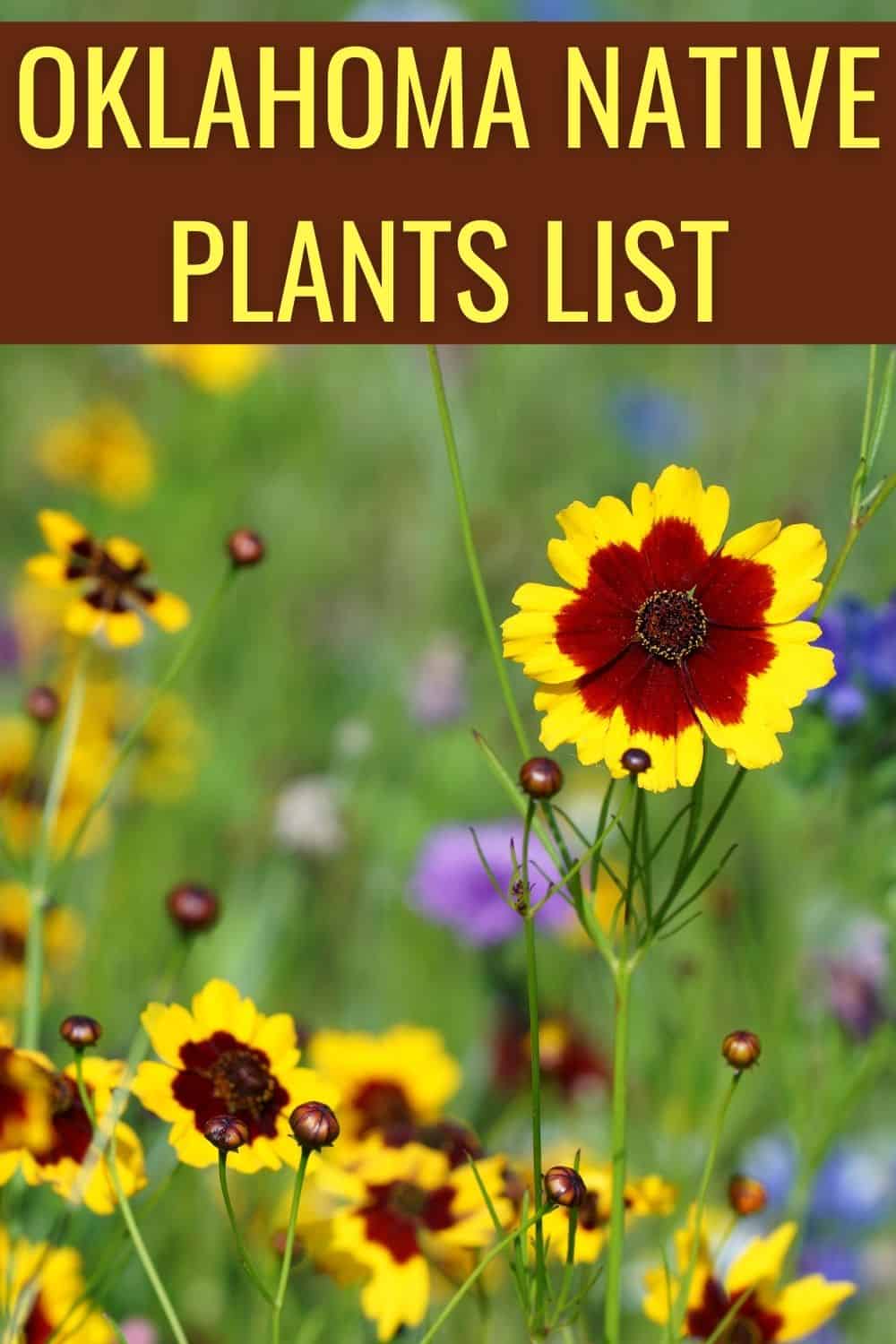

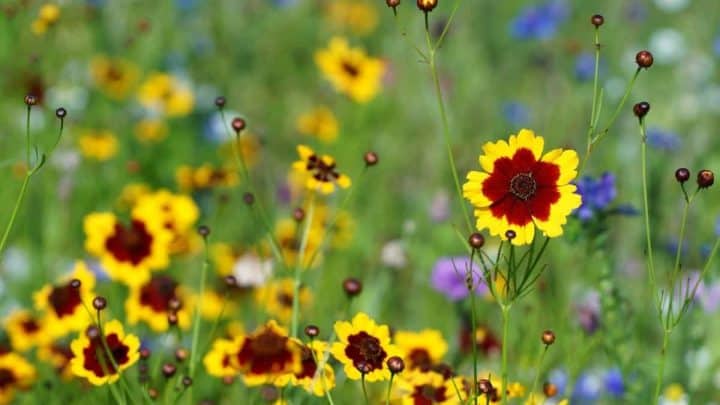









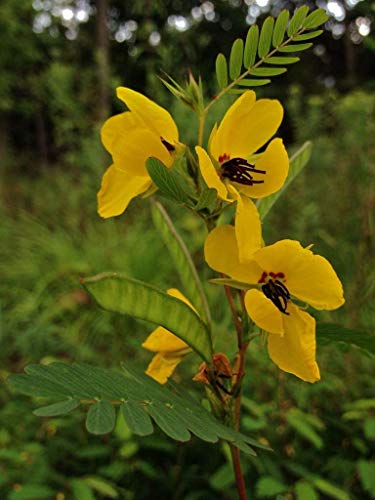



Jan Odom
Thursday 20th of April 2023
Where can I find a proposed layout for a 12 X 15 full sun bed? I recently lost a mature oak and have to convert the bed from full shade to full sun. I want to layer the bed with native plants from low height to high. Thank you.
Adriana
Thursday 20th of April 2023
I'd check with your state extension and see what they have to offer. Try this website: https://extension.okstate.edu/ (there's a phone number at the bottom of the page)